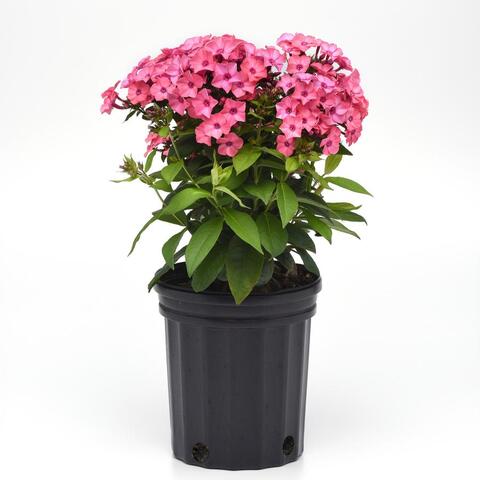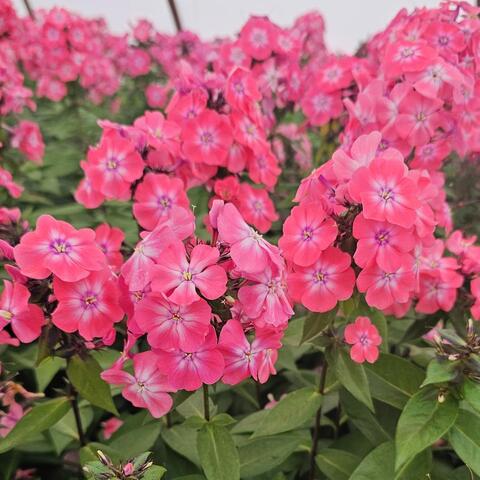 North Shore Plant Club
North Shore Plant Club
- Shop For Plants
- Search Plants
- Resources for Gardeners
- Color Wheel of Plants
- Interactive Landscapes
- Photos of Planters & Hanging Baskets
- December Photos from Our Community
- Botanic Gardens: Chicago & Beyond
- Local Nurseries
- Upcoming Plant Events
- Articles about Plants & Gardening
- Chicagoland Garden Calendar
- Explaining Plant Container Sizes
- Thrillers, Fillers & Spillers
- Join Free!
- Mundelein
Candy Store Coral Creme Drop Phlox (Phlox paniculata 'Ditomdre' CORAL CREME DROP)
|
|||||
| Perennial Upright | |||||
Buy Candy Store Coral Creme Drop Phlox | |||||
|
|||||
Clusters of deliciously scented coral-colored flowers fill the garden with a sweet fragrance until fall. |
|||||
|
Phlox paniculata shows up fashionably late, but inevitably steals the spotlight with its bold colors. Garden phlox is not just pretty—it's fragrant. Like, "Did someone just spritz perfume in the garden?" fragrant. Pollinators love it. Bees buzz around like it’s brunch, and butterflies treat it like a VIP lounge. And yes, it's native-ish, so it knows how to handle Chicagoland's mood swings: blazing sun, surprise thunderstorms, and winters that feel like a breakup. But beware: Garden Phlox is a bit high-maintenance. Powdery mildew? She’s had it. Needs space, sunshine, and a little pruning to keep her from flopping like a tired diva. But give her what she wants, and she'll reward you with a show-stopping performance every year. Phlox paniculata is an erect herbaceous perennial that may grow 2 to 4 feet tall and is clump-forming. Flowers come in various colors and bloom mid-summer to mid-fall. It mixes well with other perennials, attracts hummingbirds, and is a good selection for a bird garden. This popular flower has escaped gardens and naturalized into areas beyond its original native range. Phlox paniculata prefers sun to partial shade and moist, fertile, and well-drained soils. Good air circulation (adequate spacing and thinning of stems as needed) will help combat powdery mildew. Overhead watering should be avoided. Phlox needs to be watered in dry summers and mulched to keep the root zone cool. Removing faded flower panicles will prolong blooming and prevent self-seeding as cultivars do not come true from seed. In winter, plants should be cut to the ground and removed from the garden in order to minimize possible powdery mildew infection for the following season. This plant has numerous pest and disease problems and is not always an easy plant to grow well. Phlox bugs, powdery mildew, and root rot can be serious problems. Spider mites can also be a problem, particularly in hot, dry conditions. Taller stems may need staking.
|
|||||
Pros
|
|||||
Cons
|
|||||
Plant Data | |||||
| Mature Size | 18 - 24 inches tall. 18 - 24 inches wide. | ||||
| Growth Rate | Medium | ||||
| Moisture Tolerance | Moderate | ||||
| Zones | 3a - 9b (Usually hardy to -40° F) | ||||
| Tags | Attracts Butterflies, Attracts Hummingbirds, Attracts Pollinators, Attracts Wildlife, Container, Deer Resistant, Edging, Extended Bloom Time, Filler, Formal Garden, Full Sun, Good for Borders, Good for Butterfly Garden, Good for Cottage Garden, Good for Mass Planting, Good for Rain Garden, Good for Rock Garden, Groundcover, Low Maintenance, Medium, Nativar, Non-Allergenic, Normal Soil, Perennial, Prairie Garden, Rabbit Resistant, Reblooms, Showy Flowers, Tolerant of Moist Soil, Tolerant of Poor Soil, Tolerant of Salt, Well-Drained Soil, Wet Site Tolerant Fall Blooming Perennials, Pink or Red Flowering Perennials, Summer Blooming Perennials | ||||
| Bloom Period | July - September | ||||
| Flower Color | Coral
|
||||
Related Articles |
|||||
|
|||||
Photos of This with...Cotton Candy Phlox, Candy Store Grape Lollipop Phlox |
|||||



| |
|
Want More
photos of this plant? Try
Google Image Search!
|
|
Pricing and Availability HistoryClick a label to toggle visibility for that size
|
|